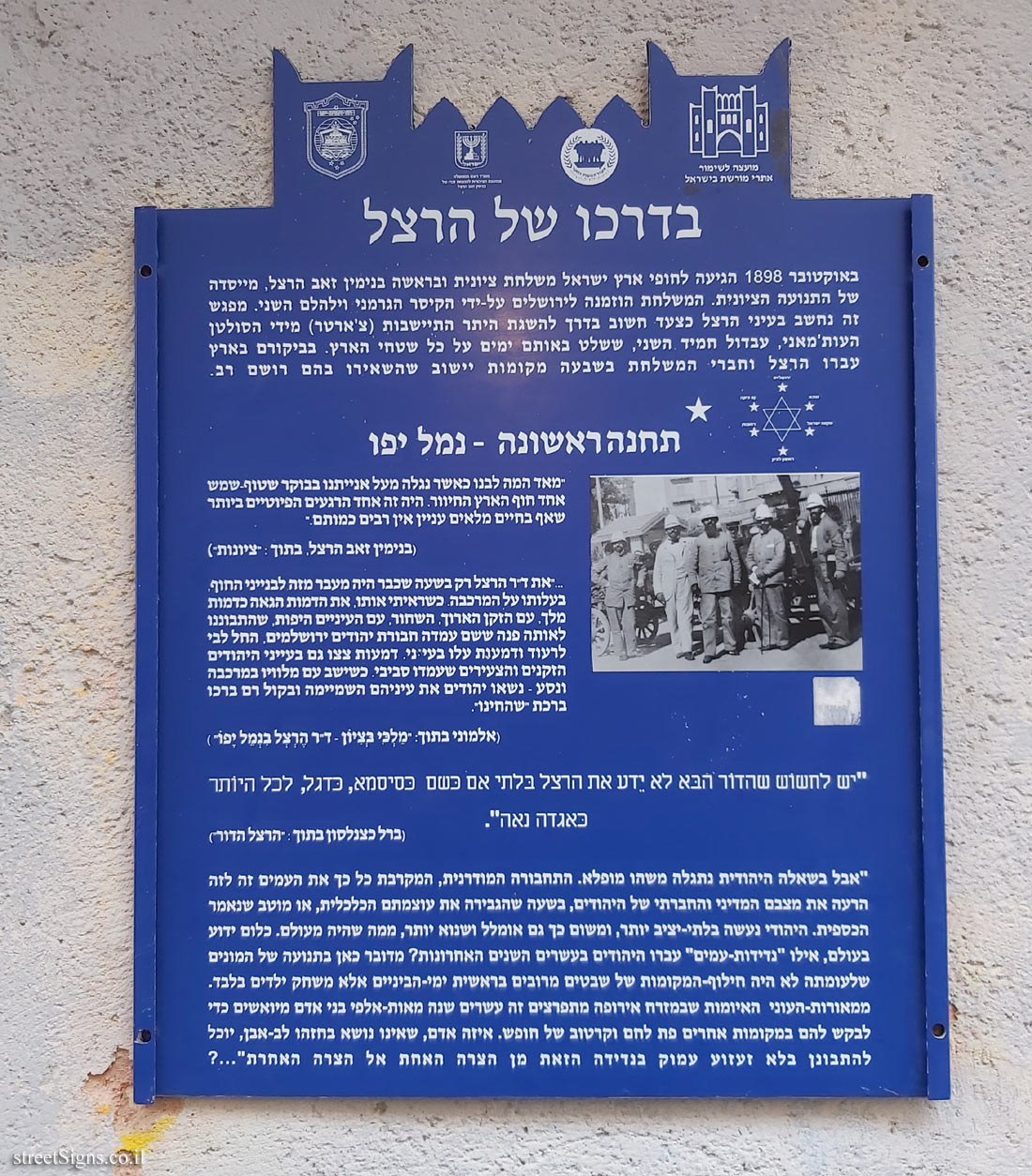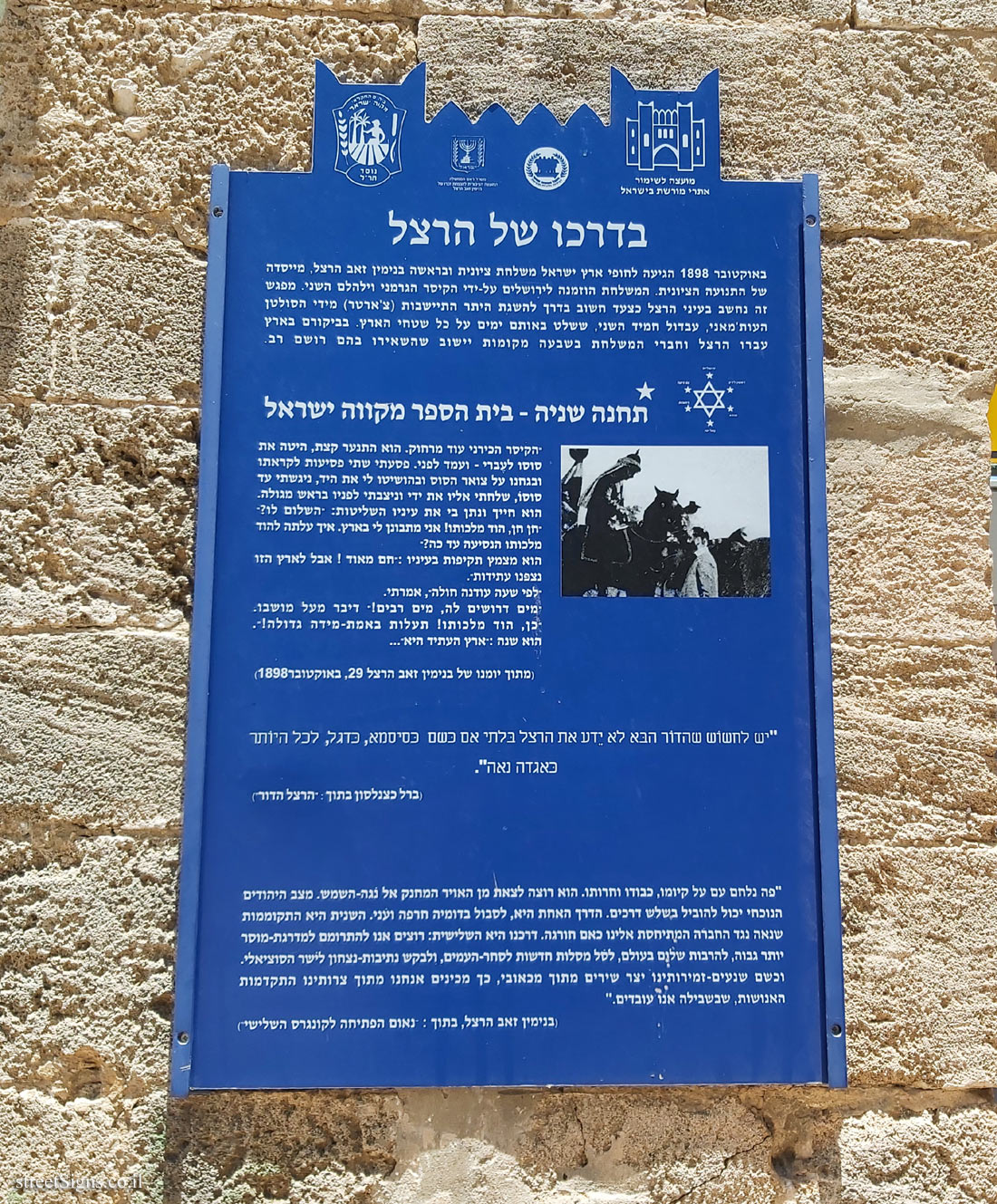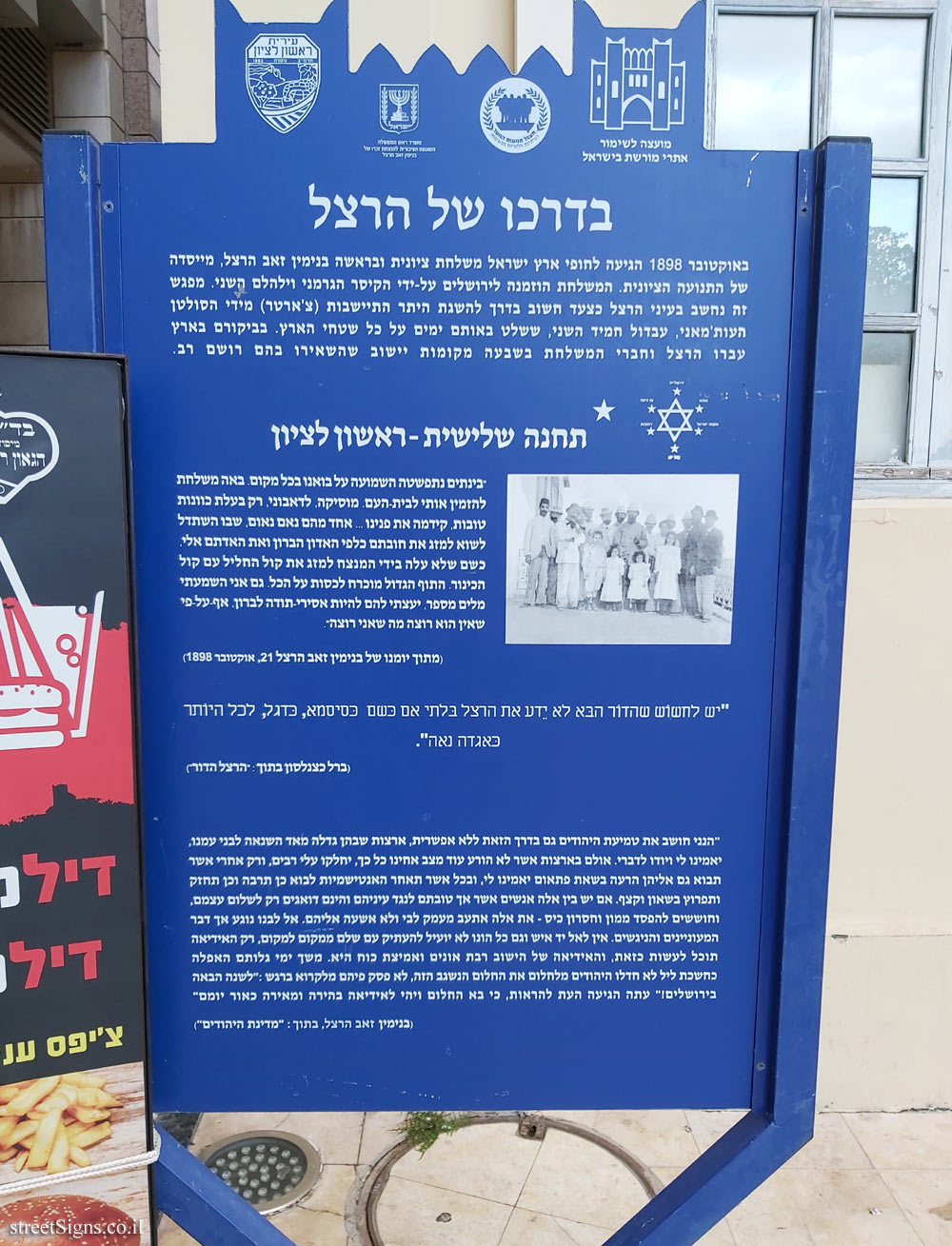The sign shape is rectangle but its head is designed according to the silhouette of the old building of the Gymnasia Herzliya, which serves as a logo of the Council for the Preservation of Heritage Sites in Israel
The sign is located in front of the home of Reuven Lerrer, one of the founders of Ness Ziona, mentioned in the sign in the description of Max Bodenheimer
The house and sign in front of it were photographed that day
 Click for a larger image
Click for a larger image More stations in Herzl’s journey
First station: Jaffa Port
 Click for sign's details
Click for sign's details Second station: Mikveh Israel
 Click for sign's details
Click for sign's details Third station: Rishon LeZion
 Click for sign's details
Click for sign's details Fifth Station - Rehovot
 Click for sign's details
Click for sign's details Seventh Station - Jerusalem
 Click for sign's details Translation of the text on the sign
Click for sign's details Translation of the text on the sign:
Symbol of the Council for the Preservation of Israeli Heritage Sites
Symbol of the circle of Zionist-pioneering-youthful youth movements
Bait Rishonim symbol
Prime Minister’s Office emblem - Public Council to Commemorate Benjamin Ze’ev Herzl
Ness Ziona city emblem
In Herzl’s way
In October 1898, a Zionist delegation arrived on the shores of Israel, headed by Benjamin Ze’ev Herzl, the founder of the Zionist movement. The delegation was invited to Jerusalem by German Emperor Wilhelm II. This meeting was considered by Herzl as an important step in obtaining a settlement permit (charter) from the Ottoman sultan, Abdul Hamid II, who ruled all areas of the country at that time. During their visit to Israel, Herzl and the delegation members moved to seven localities, which left a great impression on them.
Fourth Station - Ness Ziona "At the request of the settlers, we stopped at a stopover in Wadi Hanin, a small settlement on the way to Rehovot... We took a quick stroll between the settlers’ homes, which made a good impression and signaled the beginning of economic prosperity. This was particularly evident in the veteran local settler, Reuven Lehrer. Pride and joy radiated from the elderly couple’s eyes as they presented their sons to us. Their plantations have become, thanks to their diligence and perseverance, an example and fame of the whole community. Despite our opposition, we loaded huge amounts of oranges and etrogues on our carriage. "
(Max Bodenheimer)
"It is to be feared that the next generation will not know Herzl but only as a slogan, as a flag, or mostly as a fine legend."
(Berl Katznelson in: "Herzl Generation")
"Let us not lie in our souls, thinking that this journey is honorable in the eyes of all our allies in all corners of the country. Although the idea of the political settlement has redeeming and loving in all the countries our people sit in, and the number of these lovers is increasing day by day, in a way that we could rejoice in, if it wasn’t for the various persecutions and grievances of our brethren about their bad condition while helping to acquire the sworn army corps for our flag. For many days we were dreamers and Hibat Zion was among us as a dream of a night vision, which we did not realize and did not know dawn, and therefore the opponents of the holy idea could rise up against him easily and throw him thorns. There were days when we lacked the means also the right recognition to know that in this way, and only in this way alone, the question of the Jews could be solved. Knowing that we also lacked the means of recognition, relaxed our hands and had no power to approach the work and come to an action. The ways of the world have become more known to us today than the suffering of our suffering and tortured ancestors in past generations, and in all the traditions of the times, in all the professions of wisdom and science and the art of practice, which we have also labored, we also have a great part. We can, even though it is our duty, use all of these for our belongings, and we will.
(Benjamin Ze’ev Herzl, inside: "The Journey to the Holy Land").

 Click for a larger image
Click for a larger image  Click for sign's details
Click for sign's details  Click for sign's details
Click for sign's details  Click for sign's details
Click for sign's details  Click for sign's details
Click for sign's details  Click for sign's details
Click for sign's details